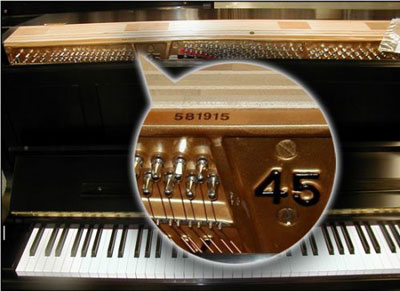

If you’re lucky and you market your instrument right, you’ll come across the right buyer at the right level, who is willing to pay the right price. The deciding factor is going to be how much the buyer is willing to pay, and how usable the piano is to a pianist. When you move outside of this coveted realm of brand names, you are much more at the mercy of the condition and age of the piano. While condition and age factor into it, people will by a Yamaha over a Kawai or a Feurich or similar brands, just because it’s a Yamaha, even though another piano might be more suitable for them. You will find people looking for a Yamaha or a Steinway, just because it’s a Yamaha or Steinway. Yamaha and Steinway are two examples I mention, due to the fact that these pianos hold their value so well in the upright market and the grand market respectively. If you are selling any kind of piano, as long as it’s outside the realm of Yamaha, Steinway, Kawai, etc, the primary factor that will determine its’ selling price is condition.
#Piano serial number lookup 100031026 how to
Some manufacturers-such as Yamaha-post this information online (type “serial” in the site’s search box if you’re lost), or it can be found in an updated version of the Pierce Piano Atlas.But What Do I Recommend? Piano Pricing How to Decide? You may need to figure out your piano’s age before you can advance, but this is easily found once you have the info in steps 1 & 2 (sometimes the date is written on the soundboard next to the manufacturer, but this is uncommon). If these areas are blank, flip open the lid and look at the soundboard, or check behind an upright/underneath a grand. The name is often found on the front of the piano, just above or below the keyboard. Contact a registered piano technician so that he/she can safely remove the necessary parts to access the serial code. On grand pianos, it may be hiding underneath the key slip. The serial number will be engraved on an interior metal plate located near the keys or on the pin block. Next, you need to determine three details specific to your piano: the serial number, the manufacturer, and the date of manufacture. Don’t tackle anything more than a loose screw, you could hurt yourself or damage the instrument further. If you notice any loose screws, tighten them but if the leg still loosens after being fixed the wood may have to be replaced.

Piano Leg Sturdiness: Wobbly legs are a safety hazard for the piano and anyone around it.If you’re unfamiliar with the interior parts, consider having them checked out if the exterior looks rough.



 0 kommentar(er)
0 kommentar(er)
